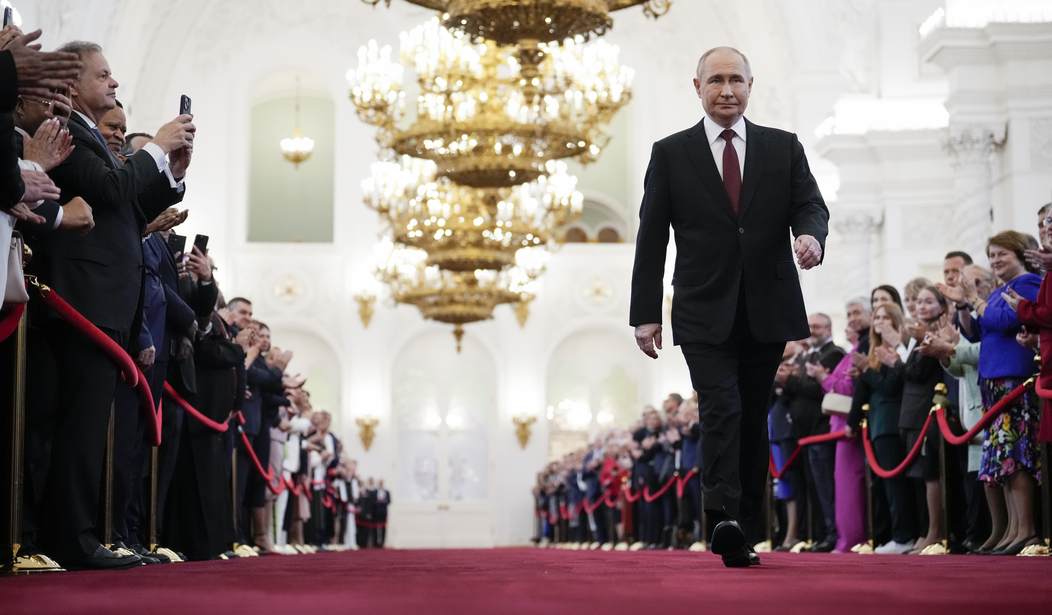The leaders of the G7 reached an agreement Thursday to use approximately $50 billion in frozen Russian assets as collateral for a $50 billion reconstruction loan to Ukraine.
“This has been something that the United States has put a lot of energy and effort into,” national security adviser Jake Sullivan told reporters. “We see proceeds from these assets as a valuable source of resources for Ukraine at a moment when Russia continues to brutalize the country, not just through military action on the front but through the attempted destruction of its energy grid and its economic vitality.”
Using frozen Russian assets for war reparations was approved by a vote of the UN General Assembly, so the fact that the civilized world is moving to make Russia pay up should not be a shock to anyone. The UN General Assembly, by a vote of 94-14, declared that Russia was responsible for the war and war reparations. This gives the US all the legal standing it needs to move in an international version of "civil forfeiture" to take possession of Russian state assets and the property of sanctioned Russian oligarchs. The G7 has also made reparations part of its policy. The main target, though, is Russian national assets, like central bank deposits.
BACKGROUND:
Putin's War, Week 38. The Lines Clarify and Everyone Is Getting Ready for the Next Phase
The West Will Make Russia Pay to Rebuild Ukraine and This Is How That Will Happen
The G7 action is one of four asset confiscation plans in some stage of finalization.
The European Union Plan
The EU plan is the simplest.
The plan focuses on the interest earned on approximately $210 billion worth of Russian central bank assets currently frozen in EU member states, primarily at the Euroclear settlement house in Belgium. The principal would be left secure, but the estimated $3.2 billion annual interest would be transferred to a dedicated fund.
About 90% would be allocated to support Ukraine's ongoing military effort against the Russian invasion. This could involve financing arms purchases, ammunition supplies, and potentially even training programs. The remaining 10% would be directed towards bolstering Ukraine's war-torn economy and reconstruction efforts. This could involve budgetary support or humanitarian aid programs. When the war ends this money would flow into reconstruction projects.
The EU plan only covers funds earned after February 15, 2024. Funds held on those accounts before February 15 will remain in escrow at Euroclear. There are still problems to be resolved. Putin's Mini-Mes in Slovakia and Hungary don't want to purchase weaponry or do much of anything. Ireland and Malta are constitutionally prohibited from buying arms for transfer to third parties.
BACKGROUND: EU Will Use Frozen Russian Assets to Fund Ukraine's Defense and Russia Retaliates – RedState
The US Plan
The Rebuilding Economic Prosperity and Opportunity for Ukrainians Act (REPO Act) was introduced by Senators Jim Risch (R-Idaho) and Sheldon Whitehouse (D-R.I.) in conjunction with Representatives Michael McCaul (R-Texas) and Marcy Kaptur (D-Ohio).
Under the provisions of this bill, the president may confiscate Russian sovereign assets directly or indirectly owned by the Russian government, its central bank, or the Russian Direct Investment Fund. This money would go to a Ukraine Support Fund administered by the State Department through the US Agency for International Development. The funds would be used for reconstruction and humanitarian assistance.
BACKGROUND:
Senate Panel Votes to Sic the Repo Man on Frozen Russian Assets
The UK Plan
The UK plan isn't fully developed, but it may be the most aggressive and the simplest. The UK government will confiscate Russian assets worth about $29 billion in the UK. They will loan — Trump should like this — Ukraine the cash value of the assets using those assets as security. At the end of the war, Russia can pay reparations equal to the asset value to Ukraine...or the UK will liquidate them.
The G7 Plan
The US has proposed that the G7 pool the $280 billion in frozen Russian sovereign assets and use those as collateral to create $50 billion in bonds that are being called Freedom Bonds. These bonds would generate interest payments to the bondholders to the tune of about $4 billion per year from interest on the underlying assets. When the war draws to a close, Russia could redeem its assets by paying their value in reparations to Ukraine. If it refuses, the assets would be sold to redeem the bonds.
BACKGROUND: EU Will Use Frozen Russian Assets to Fund Ukraine's Defense and Russia Retaliates – RedState
The fact that the G7 has agreed makes the EU plan much easier for everyone to move forward. Janet Yellen was one of the prime movers behind the G7 agreement, which means that we will start seeing the REPO Act take shape.
To bring Putin's War in Ukraine to a successful end, Russian material and financial assets must be put at risk, and Putin and his inner circle have to know they will feel the pain. This is just the first, easy hurdle that has to be crossed.













Join the conversation as a VIP Member